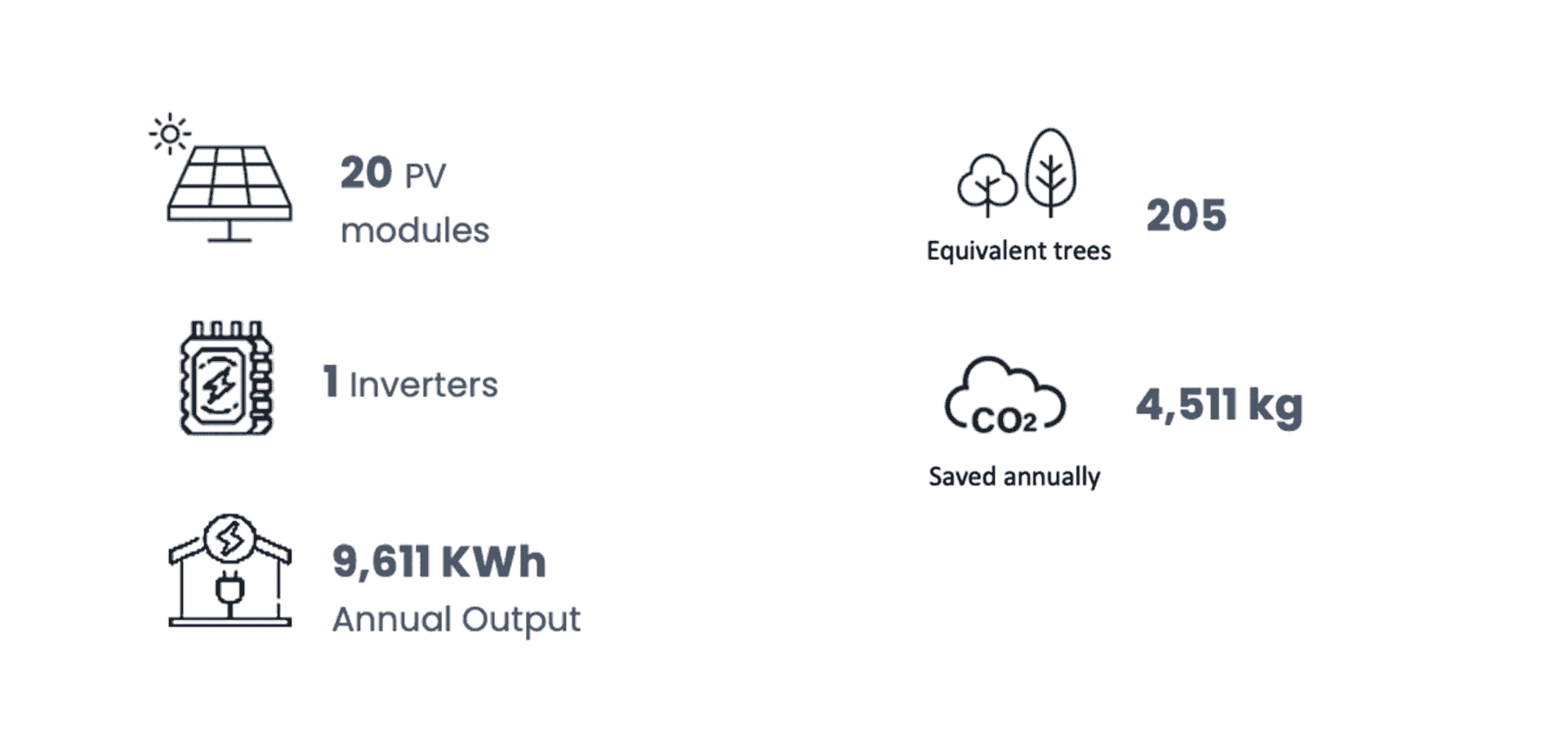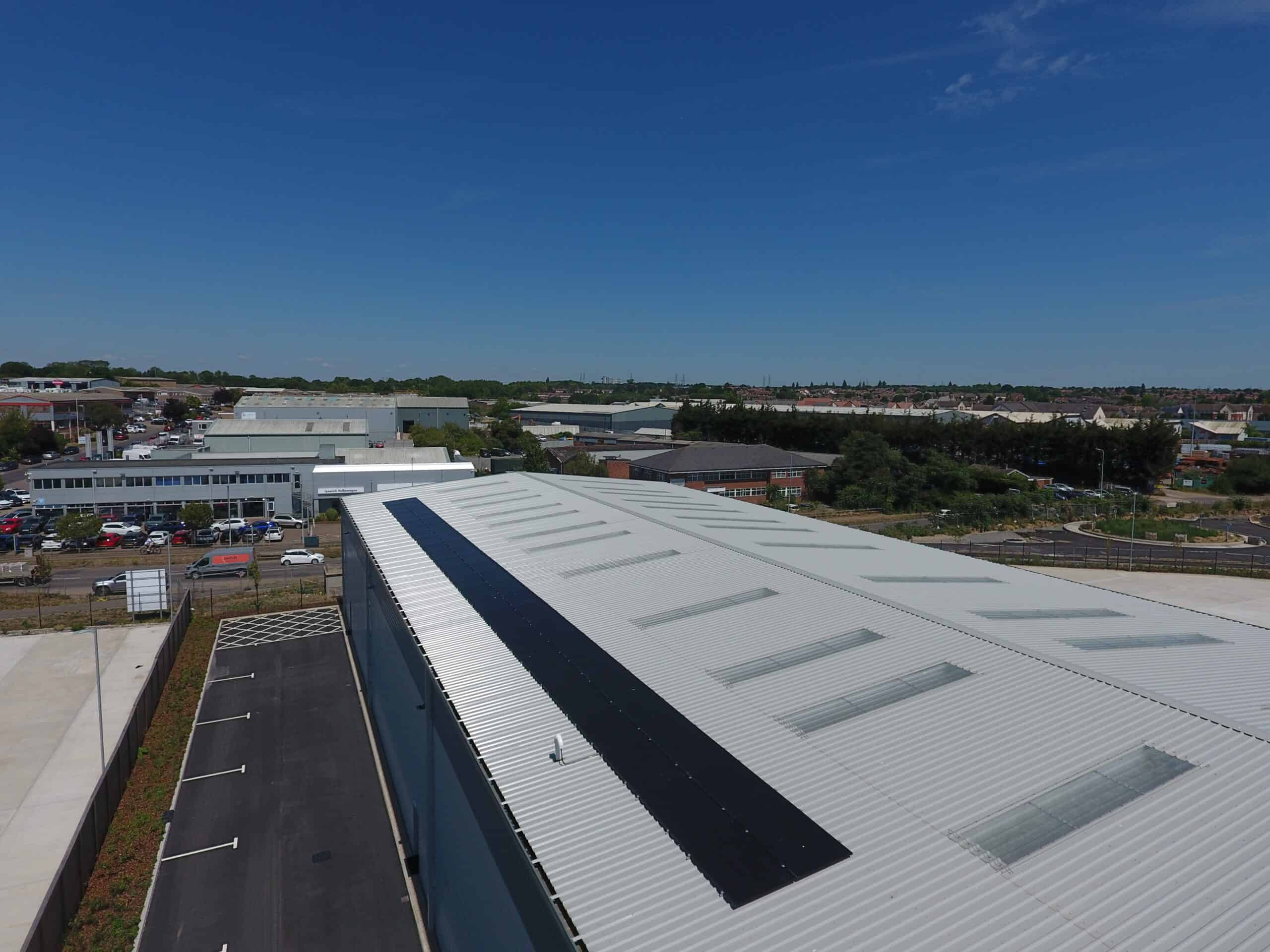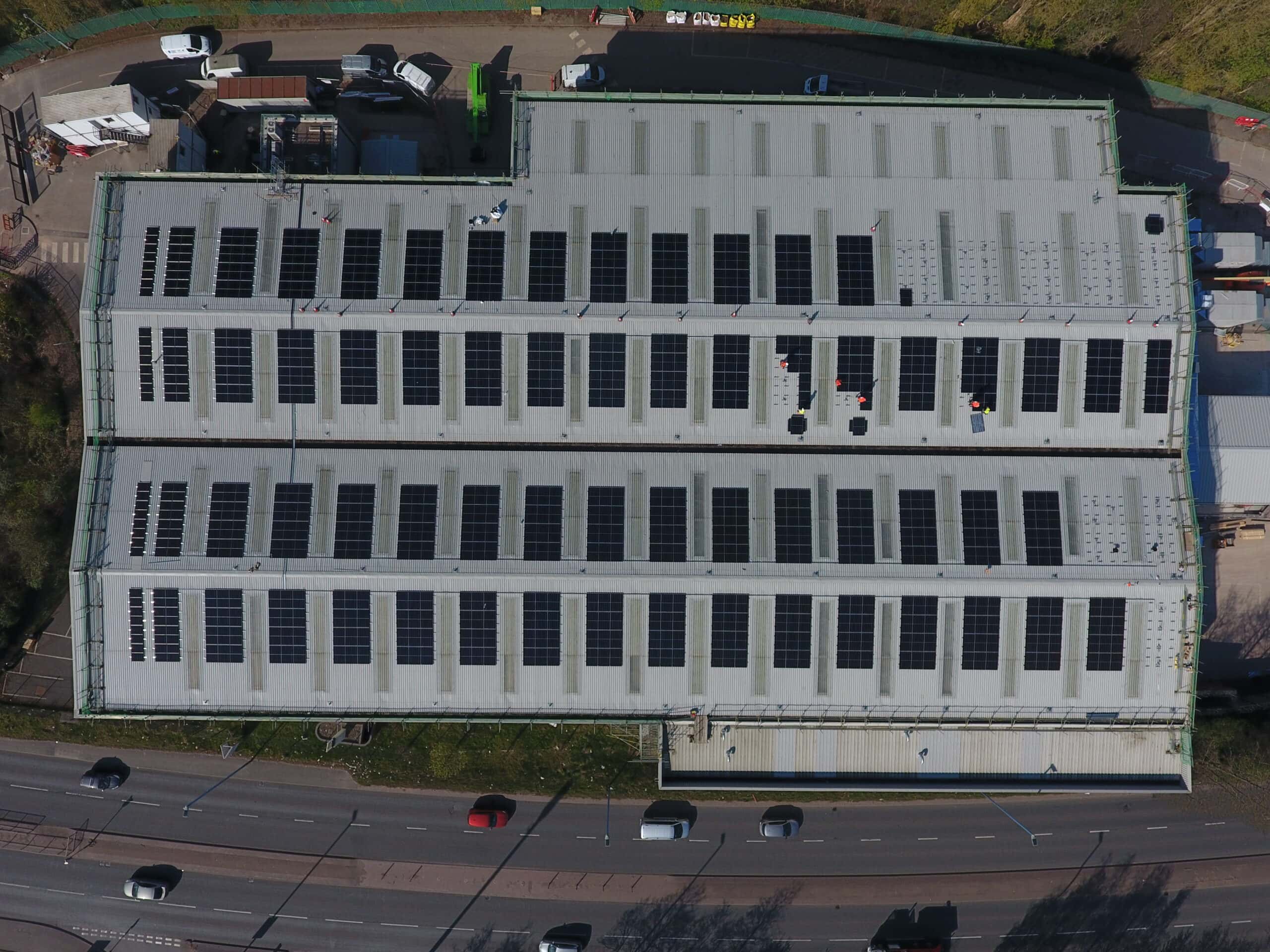Client Background
The client is the owner of a low-energy-use building located in Leicester. With sustainability in mind and very modest annual energy consumption, the client sought a cost-effective way to contribute to the UK’s renewable energy goals while potentially increasing the building’s future energy resilience.
The property presented a strong opportunity for solar generation, and Eco UK Group was appointed to develop and install the system.

Objective:
To install a grid-connected solar PV system that supports the site’s long-term environmental and energy goals.

System Design and Components
The solar installation consisted of a 10.5 kWp system configured on a southeast / Northwest orientation to maximise solar exposure throughout the day:
PV Modules:
20 x JA Solar JAM60D42-525/LB modules (525W each)
- 10 modules mounted on the Northwest-facing roof (orientation 320°)
- 10 modules mounted on the Southeast-facing roof (orientation 140°)
Panels were mounted on a flat roof with a 15° inclination on each of the orientations
Inverter:
1 x Ginlong (Solis) S5-GR3P10K three-phase string inverter
System Configuration:
Grid-connected, with surplus feed-in as the primary operating mode.
Implementation and Challenges
Initial Site Survey: Roof orientation and shading profiles were analysed using PV*SOL simulation tools.
System Design: A split system layout was selected to balance generation across morning and afternoon periods using the southeast and northwest roofs.
Mounting and Wiring: Mounting structures were installed on the roof surface, followed by electrical works connecting the arrays to the Solis inverter and integrating export meters.
Commissioning: The system was tested and commissioned in May 2025, ready for ongoing grid export.
Minimal Load On-Site: The building’s low annual usage meant that self-consumption was not the primary driver. Instead, the system needed to be optimised for safe and efficient grid export.
Shading Considerations: A minor 1.4% annual yield loss due to shading was identified and mitigated through strategic panel placement and MPP tracker assignment.
Conclusion
The 10.5 kWp solar PV installation in Leicester, demonstrates how small-scale commercial properties can still contribute meaningfully to the UK’s clean energy transition.
Although the site has minimal current electricity usage, the system was designed for high export efficiency and environmental benefit, offsetting over 4.5 tonnes of CO₂ annually.
The project highlights Eco UK Group’s ability to deliver tailored solar solutions, even in low-demand environments, with the potential for greater value as energy needs grow or market conditions evolve, supporting a grid-connected PV system, the objective was to install a solar solution that aligns with the site’s long-term environmental and energy goals.



